 |
 |
 |
| |
THE IMPACT OF 3BNC117 AND ROMIDEPSIN TREATMENT AT ART INITIATION ON HIV-1 PERSISTENCE
|
| |
| |
CROI 2022 Feb 11-16
Jesper D. Gunst1, Marie H. Pahus1, Míriam Rosás-Umbert1, Thomas Benfield2, Henrik Nielsen3, Isik S. Johansen4, Rajesh Mohey5, Lars Østergaard1, Mariane H. Schleimann1, Martin Tolstrup1, Julie Fox6, Michel Nussenzweig7, Marina Caskey8, Sarah Fidler9, Ole Søgaard1
1Aarhus University Hospital, Aarhus, Denmark, 2Hvidovre Hospital, Hvidovre, Denmark, 3Aalborg University Hospital, Aalborg, Denmark, 4Odense University Hospital, Odensen, Denmark, 5Regional Hospital Herning, Herning, Denmark, 6King's College London, London, UK, 7Howard Hughes Medical Center, New York, NY, USA, 8The Rockefeller University, New York, NY, USA, 9King's College Hospital, London, UK
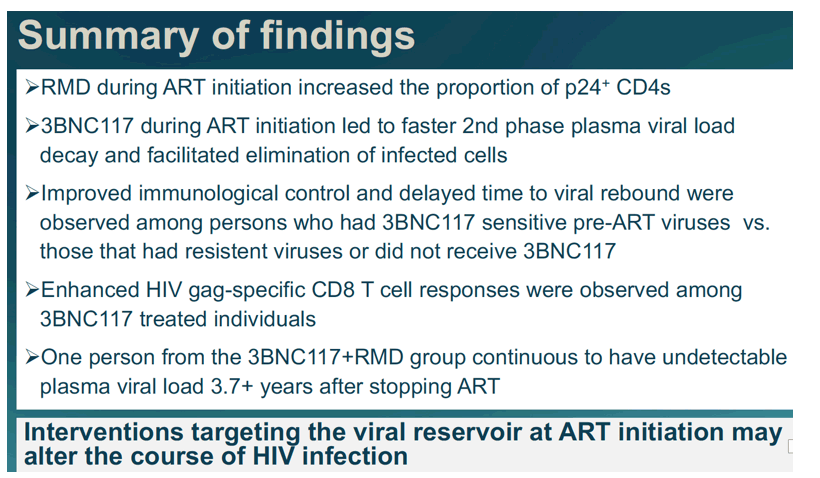
program abstract
Background:
Interventional reduction of the viral reservoir or induction of HIV-1 remission among individuals on long-term antiretroviral treatment (ART) have largely been unsuccessful. However, studies in non-human primates and mathematical modelling suggest that broadly neutralizing antibodies (bNAbs) or latency reversing agents administration at ART initiation may have a more profound effect on the establishment of HIV-1 latency. Here, we evaluated the impact of the bNAb 3BNC117 and/or latency reversal with romidepsin (RMD) on HIV-1 persistence among individuals starting first-line INSTI-based ART regimens.
Methods:
In a phase Ib/IIa multicenter controlled trial (the eCLEAR study; NCT03041012), newly diagnosed HIV-1-infected adults were randomized into 1 of 4 groups: a) ART, b) ART+3BNC117 (30 mg/kg) at day 7 and 21 after ART initiation, c) ART+RMD (5 mg/m2) at day 10, 17 and 24, or d) ART+3BNC117+RMD. Participants were followed for 365 days with an optional 12-week analytical treatment interruption (ATI) at day 400. Primary endpoints were time to viral suppression after ART initiation and time to rebound during ATI. Secondary endpoints were safety, changes in cell-associated HIV-1 mRNA and p24 over the interventional period (assessed by flow cytometry). Sensitivity to 3BNC117 was assessed by PhenoSense and HIV env sequencing.
Results:
Of the 60 enrolled participants, 47% had been infected for less than 6 months. ART effectively suppressed plasma HIV-1 RNA. Compared to ART alone, co-administration of 3BNC117 significantly enhanced the elimination of mRNA+ and p24+ HIV-1-infected CD4 T cells. Phenotypic characterization revealed that this effect was most pronounced in central memory CD4 T cells. Evidence of latency reversal was also observed in both RMD-treated groups. Four of 5 (80%) individuals, whose pre-ART plasma viruses were fully sensitive to 3BNC117, maintained HIV-1 control throughout the ATI compared to 3 of 15 (20%) of the other ATI participants who either had resistant viruses or did not receive 3BNC117 (log-rank, p=0.0248). Most adverse events were mild and unrelated to the study drugs.
Conclusion:
Co-administration of 3BNC117 at the time of ART initiation among HIV-1-infected individuals reduced the number of productively HIV-1-infected cells. Further, 3BNC117 with or without RMD during ATI initiation may lead to prolonged immunological control during ATI in individuals whose pre-ART viruses are sensitive to the bNAb.
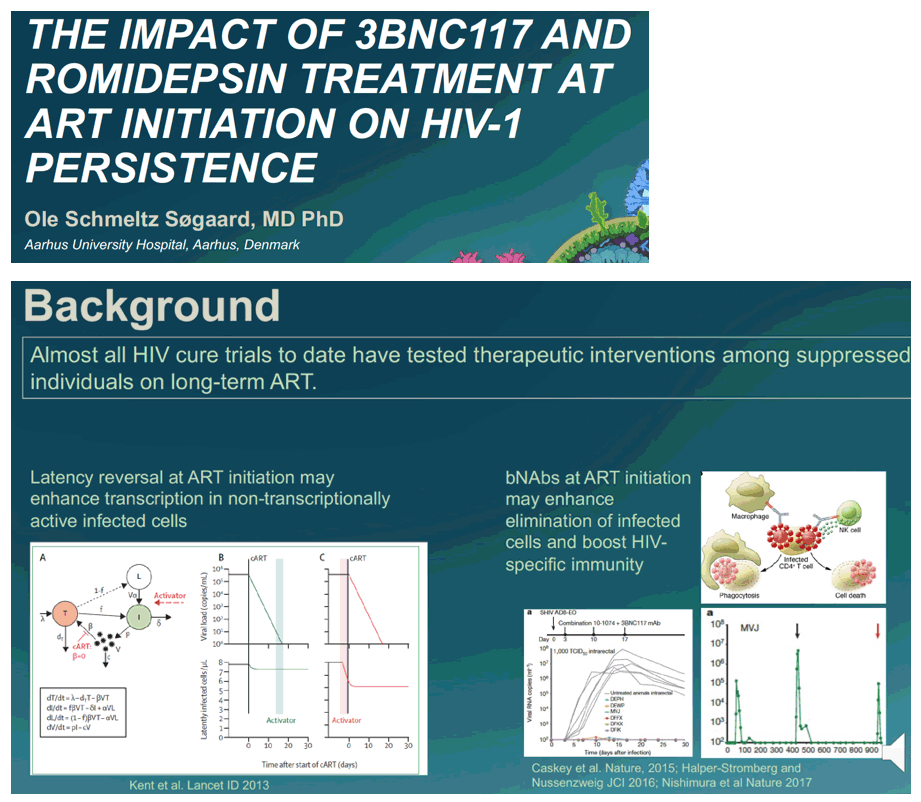
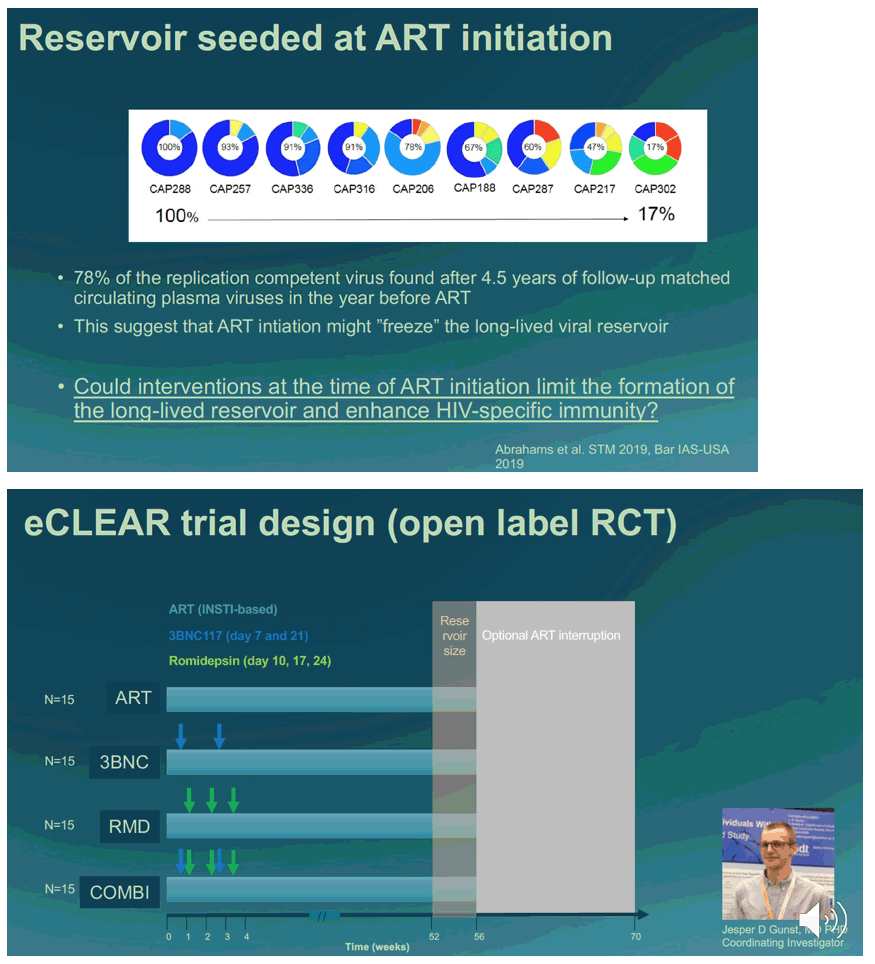
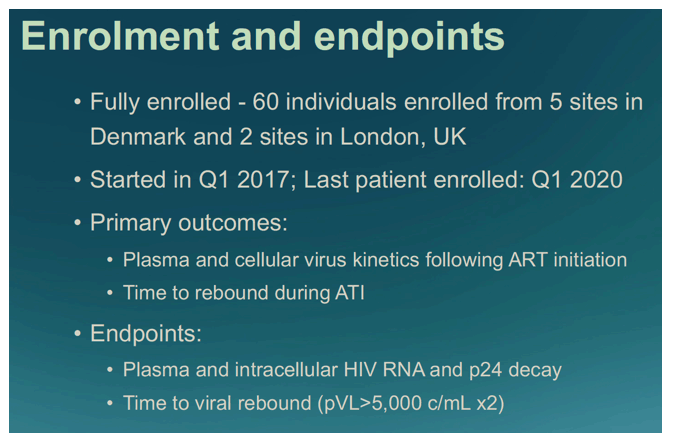
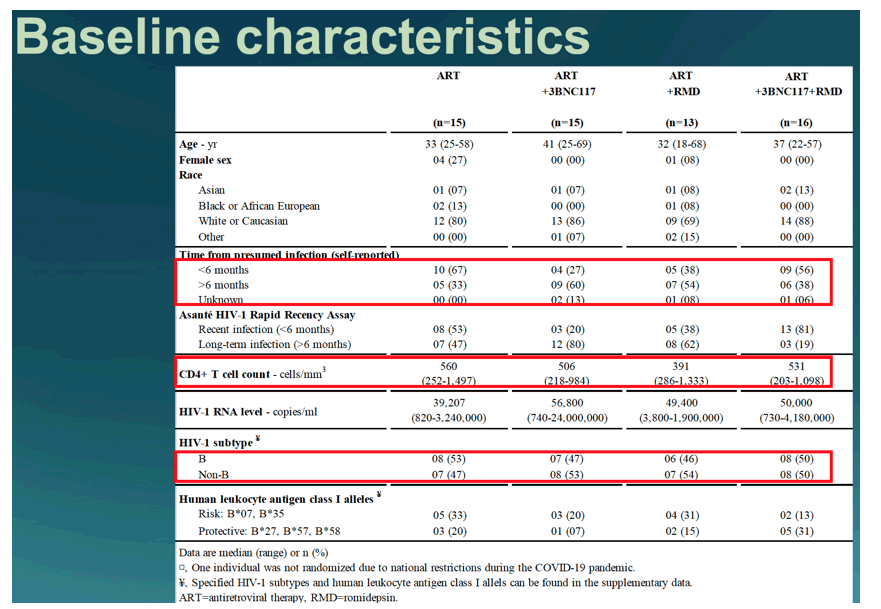

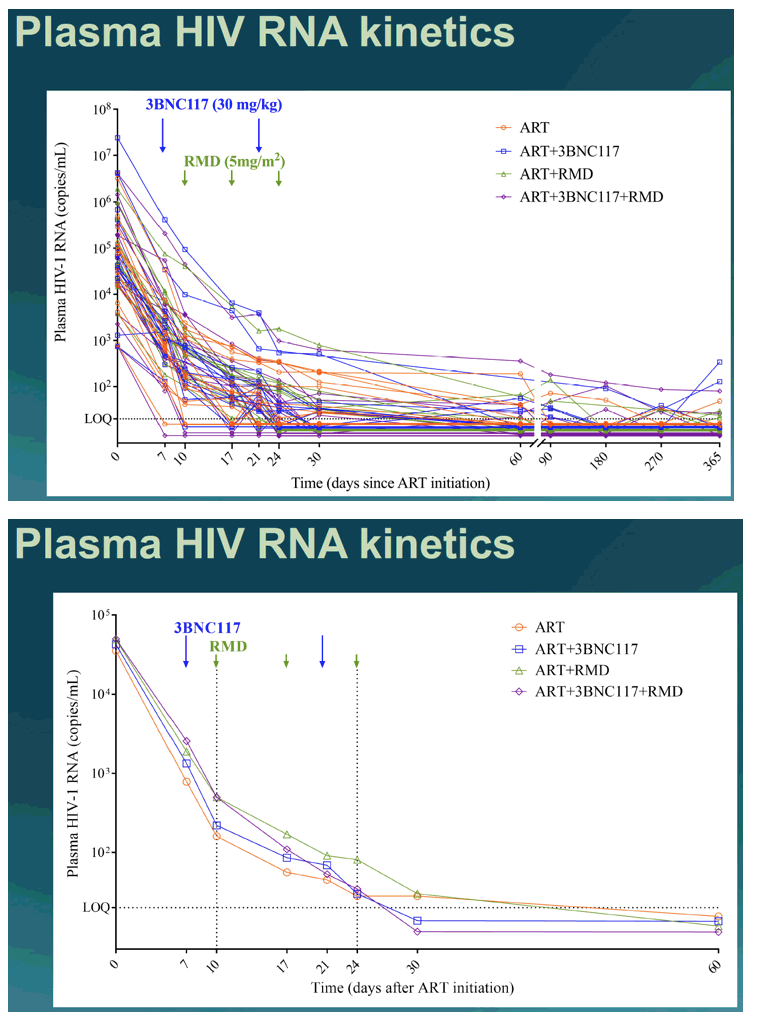

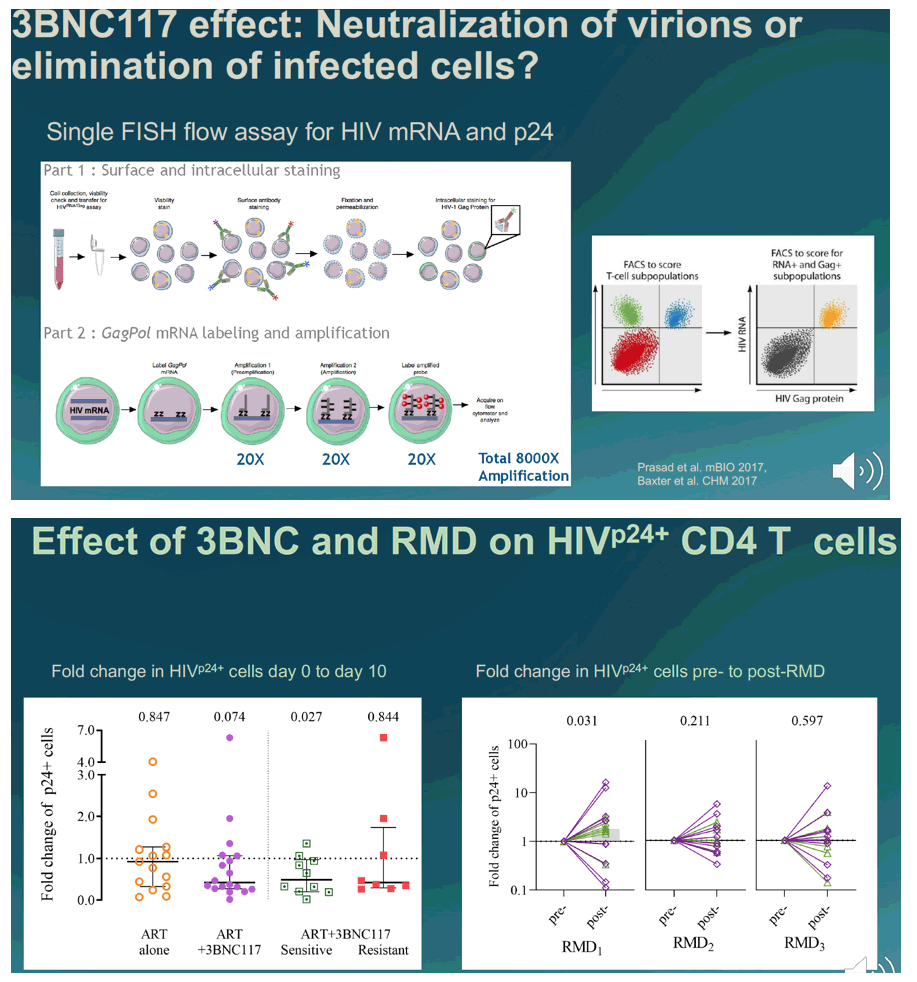
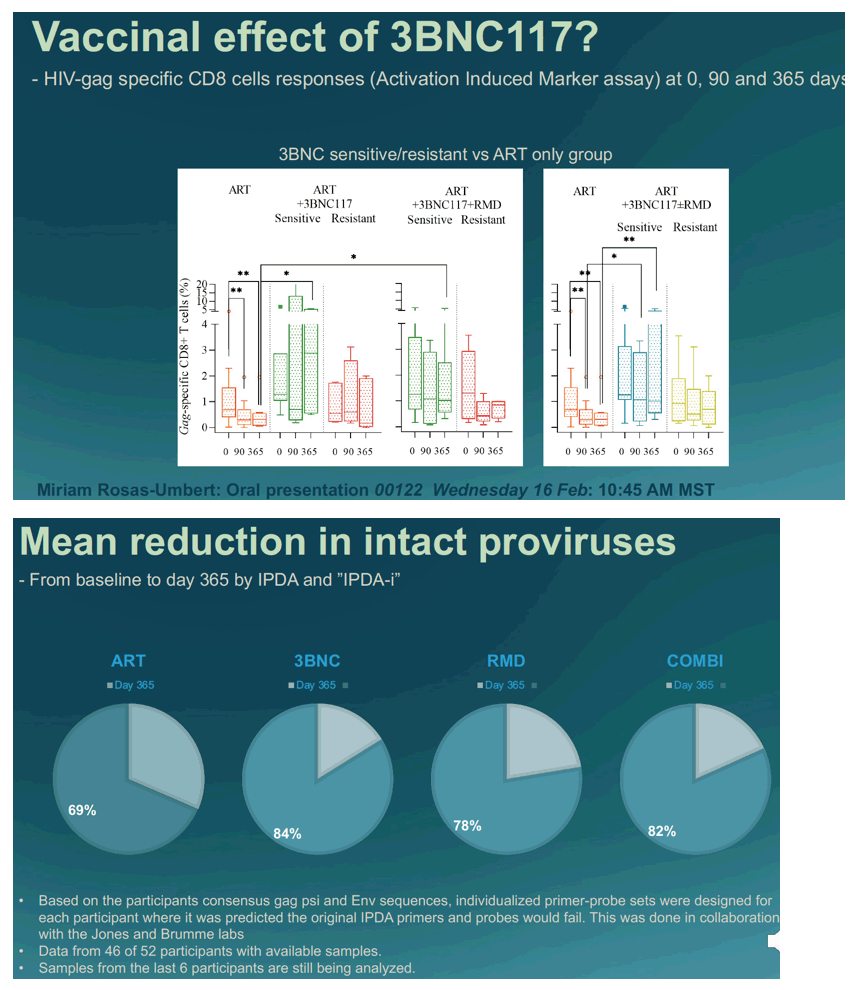
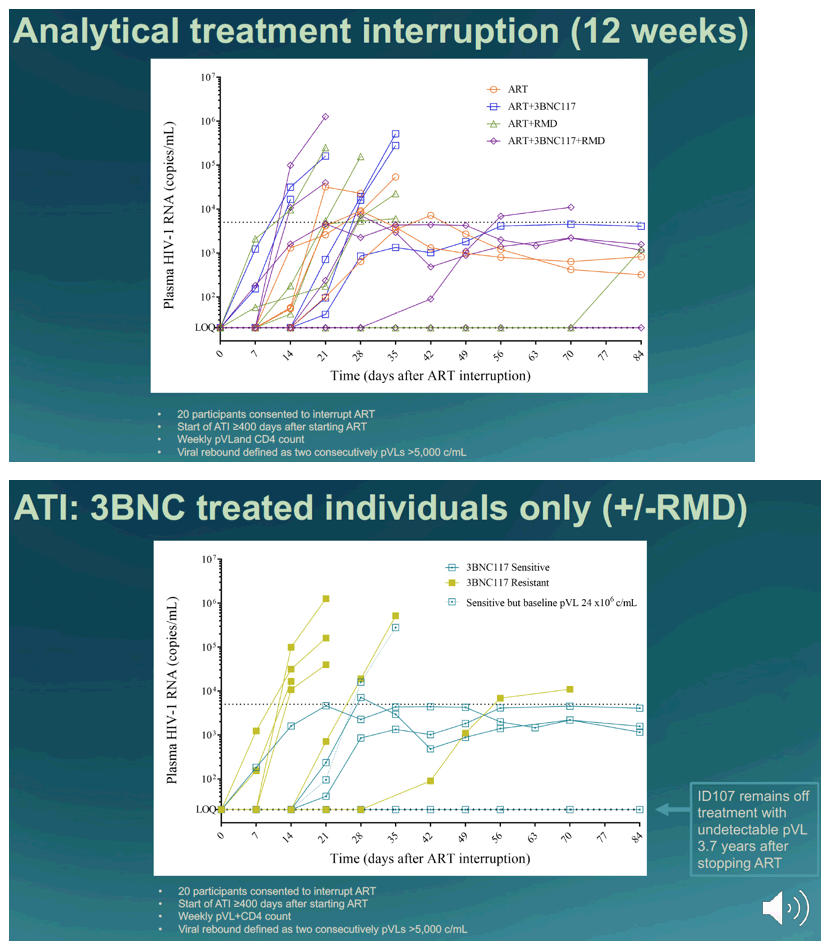
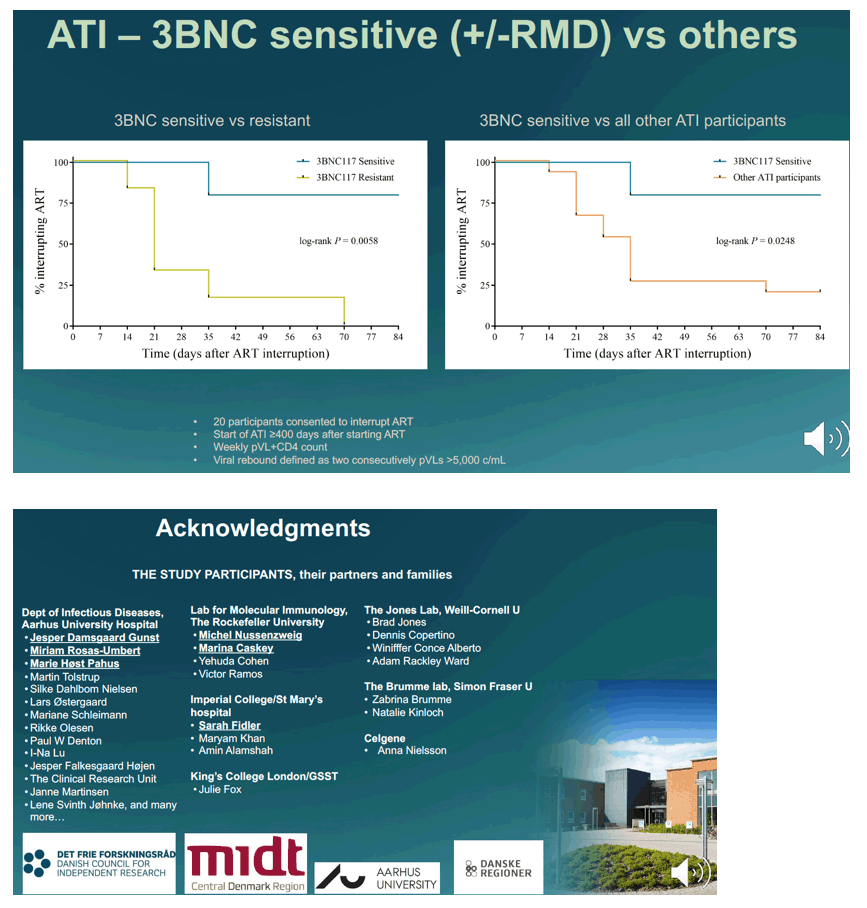
|
| |
|
 |
 |
|
|